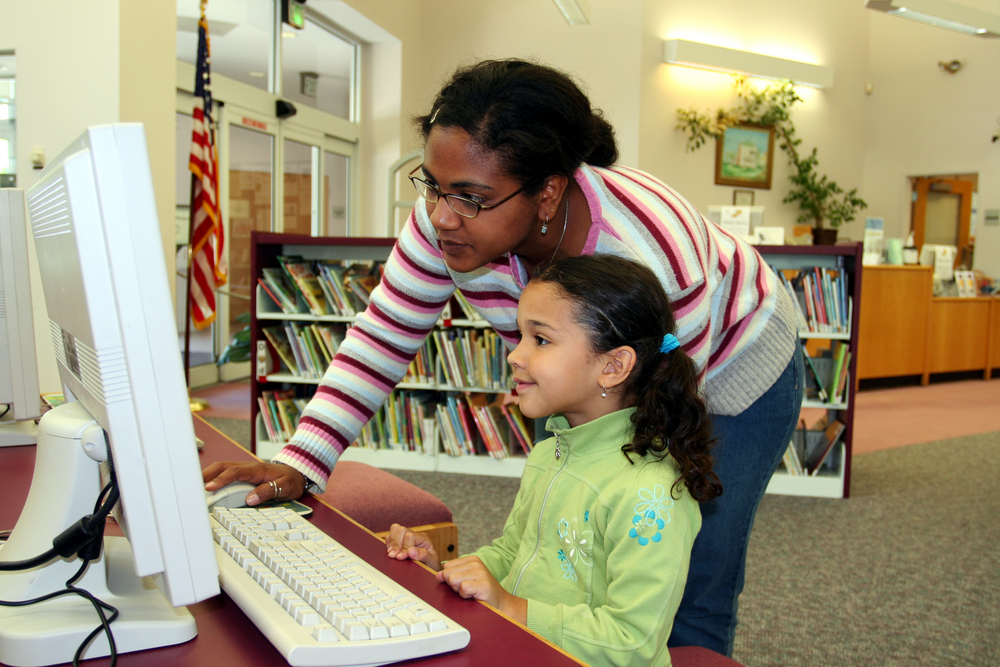
Reading at the first-grade level is a pivotal stage in a child’s academic development and sets the foundation for their future learning and literacy skills. The importance of reading at this stage cannot be overstated, as it is a critical time when children transition from the act of learning to read to reading to learn.
Why Reading Is Key in First Grade
Building Blocks of Literacy: At this stage of their education, children are expected to grasp the basics of phonics, recognize sight words, and begin to understand sentence structure and punctuation. These skills are essential as they form the building blocks of literacy. Reading helps to develop these foundational skills, which will be crucial for their educational journey.
Vocabulary Expansion: First graders who read frequently exhibit a broader vocabulary than their peers who read less. Each new book introduces a range of new words, contexts, and ideas, enriching a child’s language and understanding of the world around them.
Developing Comprehension Skills: Reading comprehension is another key facet of reading at this level. Children learn to follow simple storylines and identify key details in text. This skill is vital for retaining information and understanding more complex narrative structures in future readings.
What Level Should a First Grader Read At?
The benchmarks for reading proficiency in first graders are designed to guide parents and educators in understanding and supporting children’s literacy development. These benchmarks not only reflect where most children at this age are in their reading abilities but also outline the key skills that students should be developing.
Recognition of letters and understanding that each letter has its own sound, or phoneme. A first grader is generally expected to recognize both uppercase and lowercase letters and match them to their appropriate sounds.
Ability to read grade-level text with appropriate speed, accuracy, and expression, also known as fluency. Children at this stage should start to read sentences and simple stories more fluidly, without needing to pause at every word.
Comprehension of the content is critical. Students should be able to answer straightforward questions about the text they have read, which indicates a basic level of understanding.
Language development is observed through an expanding vocabulary. First graders often learn new words rapidly, incorporating them into their speech and written expressions.
Children should show an ability to retell simple stories or key details from books read aloud to them, demonstrating their ability to remember and process information.
Educational standards may vary slightly by region, but organizations like the International Literacy Association (ILA) provide comprehensive lists of grade-level reading benchmarks. Additionally, publishers might offer their own reading level systems that align books to specific grade levels, such as the widely recognized Accelerated Reader (AR) or Guided Reading (GR) levels.
Signs of Reading Readiness and Progress
Identifying the signs of reading readiness in a child can be just as important as recognizing the benchmarks they should meet. Here are some indicators that a first grader is on the right track:
An interest in books and being read to is a strong sign of reading readiness. Children who enjoy storytelling and look at books in their own time often transition more easily into reading independently.
Knowing that words are composed of different letters and demonstrating an understanding of phonics, such as the ability to sound out unfamiliar words, indicates a fundamental grasp of reading mechanics.
The ability to recognize and remember sight words is an important part of reading readiness. These are often words that do not follow standard phonetic rules and need to be memorized.
The development of fine motor skills, like holding a pencil correctly and being able to write letters, can also be an indication of reading readiness, as these skills are related to the child’s overall literacy development.
Observing a child’s narrative skills, like telling a coherent story from their own experience or predicting what might happen next in a book, showcases their understanding of story structures and comprehension.
Selecting Appropriate Reading Material
Choosing the right books for a first-grade reader is vital for sparking an interest in reading and for developing their reading skills. Appropriate reading material should match their reading ability while challenging them enough to promote growth. The material should not be too difficult, as this could lead to frustration, nor too simple, which might result in a lack of engagement or advancement.
Factors to consider when selecting books for first graders include:
Simple Sentence Structure: Books should have simple and clear sentence structures that are easy for children to follow.
Repetition: Repetitive patterns in the text help children anticipate what comes next, supporting their decoding and fluency development.
Illustrations: Detailed and colorful illustrations can help children understand the story and stay interested.
Cultural Relevance: Stories that reflect a child’s own experiences can be more engaging and can enhance their understanding.
Interactive Elements: Books with activities or questions prompt children to think about what they are reading and engage more deeply with the text.
Balancing Fiction and Non-Fiction
Ensuring first graders have access to both fiction and non-fiction is important for developing a well-rounded reading experience. Fiction books spark imagination and empathy by allowing children to explore stories and characters different from their daily experiences. Non-fiction books, on the other hand, provide factual information about the world, which can ignite an interest in science, history, and the arts.
Fiction helps children with:
Creative Thinking: Encouraging children to imagine scenarios beyond their personal experiences.
Language and Narrative Skills: Developing plot and character understanding, which is important for comprehension.
Non-fiction assists children with:
Critical Thinking: Fostering understanding of the world and ability to differentiate between fact and fiction.
Knowledge Base: Building background knowledge that is essential for understanding complex texts later on.
Incorporating both genres can help children learn to enjoy reading as both a leisure activity and a learning tool.
Carefully selecting a balance of fiction and non-fiction reading materials at the appropriate level can significantly enhance a first grader’s reading development. The successful combination of attractive book features, a range of genres, and educational value will not only improve literacy skills but also foster a lifelong love of reading.

Enhancing Comprehension and Engagement
Developing reading comprehension and engagement in children is necessary for their academic advancement and fostering a love of reading. As parents and educators, it is important to utilize strategies and practices that not only enhance these skills but also make reading an enjoyable and interactive practice.
First Grade Reading Comprehension Strategies
Reading comprehension involves understanding the meanings behind words and grasping the overarching message within texts. At the first-grade level, comprehension is nurtured through a variety of strategies:
Predicting: Before reading, ask the child what they think a book or a particular story might be about based on the title or cover illustration. This sets a purpose for reading and gets them actively thinking.
Questioning: While reading, pose questions about the content. “What do you think will happen next?” or “Why did the character do that?” Encouraging children to ask their own questions improves their analytical skills.
Visualization: Have the child create mental images of the scenes as they read. By visualizing what they are reading, children can better understand and remember the story’s details.
Connecting: Help the child make connections between the text and their own life or other books they have read. This builds deeper understanding and personal relevance to the reading material.
Summarizing: After reading, discuss the main points of the story. Ask the child to retell the story in their own words, focusing on the main events and characters.
Inferring: Teach children to look for clues in the text that hint at meanings not directly stated. This helps them “read between the lines.”
Monitoring: Encourage children to be aware of their understanding as they read. If they get confused, they should learn to pause and use strategies like re-reading or asking for help.
Interactive Reading Practices for Parents and Children
Interactive reading practices are vital for engaging first graders and reinforcing comprehension skills. These practices turn reading into a collaborative activity that can greatly increase a child’s interest and participation:
Shared Reading: Sit together and read a book aloud. Model expressive reading and share the excitement of the story to make reading a pleasurable activity.
Role Reversal: Let the child become the ‘teacher’ and read to you. This can empower them and provide a sense of accomplishment.
Act It Out: Encourage the child to act out parts of the story. This kinesthetic activity helps with memory retention and brings stories to life.
Reading Journals: Provide a notebook where the child can draw or write about stories read. This practice helps with reflection and personal expression.
Book Clubs for Kids: Organize or join a book club for children where they can discuss books with peers. Such social settings can enhance comprehension and make reading a social event.
By incorporating these interactive reading practices, parents and children can explore the realms of literature together in a manner that is both engaging and educational. Using these methods will help children improve their reading skills and develop a joy for reading that extends beyond the classroom.

Reading Skills Development and Practice
In first grade, children are at a critical point in their reading skills development, laying the groundwork for future educational success. Mastery of certain core competencies is essential for building confidence and competence in young readers.
Phonological Awareness: First graders must develop an ear for the sounds that make up words. This includes being able to recognize and produce rhymes, as well as the ability to break words down into their individual sounds, known as phonemes.
Print Awareness: Children should understand the basics of how print works, including the direction of reading and writing in their language (from left to right and top to bottom in English), and the recognition that printed words carry meaning.
Letter Knowledge: Recognizing the differences between letters and knowing the names and sounds associated with each is foundational. This includes both uppercase and lower-case letter identification.
Word Recognition: Building a repertoire of common words that can be easily recognized helps with reading fluency. This is often achieved through familiarity with sight words—those that are commonly encountered and sometimes don’t follow regular phonetic rules.
Understanding Context: Children begin to learn how to infer meaning from context, an important practice as they encounter new vocabulary and concepts in texts.
Daily Reading Routines and Practices
Establishing daily habits centered around reading can greatly contribute to literacy skill development. These routines offer structured practice, which is important for reinforcing the skills learned in the classroom.
Regular Reading Time: Setting aside a specific time each day for reading helps create a routine that encourages consistency. This might be quiet reading alone, reading aloud with a family member, or listening to a story.
Diverse Reading Materials: Exposure to a variety of genres, including storybooks, informational texts, poetry, and folktales, can help first graders experience a wide range of language uses and narrative structures.
Reading Logs: Keeping a simple log where the child records the title and author of books read, along with their personal rating or a drawing about the story, can make reading a more interactive and reflective activity.
Interactive Reading: Engage with the text by asking predictive questions, discussing characters’ motivations, and relating personal experiences to the story. This dialogue enriches the reading experience and develops comprehension.
Word Games: Integrating fun word-based games and puzzles into daily activities supports vocabulary development and can make the learning process enjoyable.
The development of reading skills in first grade is a complex process requiring a balance of theoretical understanding of language and practical, engaging activities. By emphasizing essential reading skills and incorporating regular, varied reading practices, parents and educators can create a supportive environment for first graders to flourish as readers.
FAQ’s
What level should a first grader read at?
A first grader should be able to recognize letters and their sounds, read grade-level text with suitable speed and expression for their age, comprehend simple stories, have a growing vocabulary, and retell stories in their own words.
How do I assess first grade reading levels in children?
First-grade reading levels can be assessed through educational publisher benchmarks, tools like the Lexile Framework for Reading, and observing a child’s ability to recognize letters, read with fluency, comprehend stories, and expand their vocabulary.
What is involved in first-grade reading activities?
First-grade reading activities can include interactive games, shared reading, role reversal, acting out stories, maintaining reading journals, and participating in book clubs, all of which help reinforce reading skills and comprehension.
How do I help my child with first-grade reading comprehension?
Strategies to help with first-grade reading comprehension include discussing stories, asking predictive and analytical questions, encouraging visualization and connections to the text, and summarizing stories after reading.
How can I ensure effective first grade reading practice at home?
Effective first-grade reading practice can be ensured by establishing daily reading routines, providing a variety of reading materials, engaging in interactive reading, visiting libraries, and incorporating educational games and activities.
Help Your Child Achieve First (1st) Grade Reading Level Mastery
Is your child embarking on the critical journey of first-grade reading? The transition from learning to read to reading to learn is a pivotal moment in their education, and Readability Tutor is here to guide them every step of the way.
Our award-winning app offers an interactive voice-based AI tutor that delivers real-time feedback as your child reads out loud, helping to refine their pronunciation and solidify their understanding of sentence structure and punctuation.
Watch your child’s vocabulary flourish with Readability Tutor’s tailored word introductions, and see their comprehension skills deepen through our IVQA™ system that engages them in critical thinking. With a personal tutoring experience, the app provides a supportive environment that mirrors the benefits of one-on-one instruction, encouraging your child to build confidence in their literacy abilities.
Staying informed on your child’s progress is effortless with Readability Tutor’s detailed reading reports. You can track improvements, monitor reading speed, and celebrate each new milestone in their literary journey. Don’t let the challenge of selecting appropriate reading material or fostering a love for both fiction and non-fiction slow down your child’s progress. Readability Tutor provides a balanced and captivating library at their fingertips.
Secure the foundation of your child’s future learning and literacy skills. Empower your first grader with the joy of reading and the pride of independence in their reading adventure. Join the Readability Tutor community today and help your young reader unlock a lifetime love for books and learning. Download the app now and embark on a path to reading success.

 Español
Español